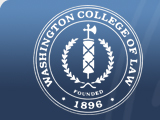Abstract
This Article argues for broad First Amendment protection for “controversial” religious and pro-life student expression. The vast majority of religious and pro-life clothing is no more likely to create an actual disturbance that substantially disrupts school functions than a peace armband worn during Vietnam, the student expression upheld in the seminal case of Tinker v. Des Moines Independent Community School District. Section I of this Article discusses several Supreme Court student speech cases with an emphasis on their applicability to situations involving high school students who wear “controversial” religious and pro-life clothing. This section argues that Tinker’s substantial disruption test—not Tinker’s “rights of others” dicta or Bethel School District No. 403 v. Fraser—provides the appropriate mode of analysis for cases involving “controversial” religious and pro-life clothing. Section II reviews several lower court cases that have considered restrictions on student religious or pro-life speech. This section argues that Nixon v. Northern Local School District Board of Education, K.D. ex rel. Dibble v. Fillmore Central School District, and Saxe ex rel. Saxe v. State College Area School District12 present a proper reading of Tinker by providing broad protection for controversial student speech. Conversely, Nuxoll ex rel. Nuxoll v. Indian Prairie School District and Harper ex rel. Harper v. Poway Unified School District provide insufficient protection for student religious and pro-life expression. The Article concludes by encouraging lower courts to follow the reasoning of the more speech-protective cases whenever possible.
Recommended Citation
Sekulow, Jay Alan, Zimmerman, Erik M., “Tinker at Forty: Defending the Right of High School Students to Wear Controversial Religious and Pro-Life Clothing.” American University Law Review 58, no. 5 (June 2009): 1243-1284.

